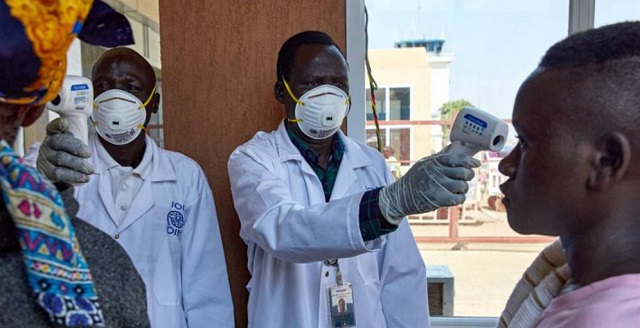
Spreading COVID-19 controversy

Asymptomatic, pre-symptomatic, symptomatic: what is the difference?
Kampala, Uganda | THE INDEPENDENT | Do asymptomatic people carrying the SARS-CoV-2 virus that causes the coronavirus disease COVID-19 transmit it?
This question came to the forefront in Uganda recently after a video clip of Dr Maria Van Kerkhove, the COVID-19 World Health Organisation technical lead commenting on the issue in early June attracted massive attention on social media.
In the clip, Van Kerkhove says “from the data we have, it still seems to be rare that asymptomatic persons transmit the virus to a secondary individual.”
The statement which Van Kerkhove made on June 09 attracted widespread attention, leading the WHO to clarify.
Van Kerkhove acknowledged that her use of the phrase “very rare” had been a miscommunication. She said she did not mean to imply that “asymptomatic transmission globally” was happening rarely, because that has not been determined yet.
“The majority of transmission that we know about is that people who have symptoms transmit the virus to other people through infectious droplets,” Van Kerkhove said. “But there are a subset of people who don’t develop symptoms, and to truly understand how many people don’t have symptoms, we don’t actually have that answer yet.”
Before a vaccine is available, our best hope of combating coronavirus lies in preventing its spread. But how to do this when people may be unaware they have it?
According to the Ministry of Health, the majority (57.4 percent) of the people that have tested positive for COVID-19 in Uganda do not show any of the common symptoms associated with COVID-19.
“We are still investigating why this might be but one reason is that majority of our confirmed cases are below the age of 50 and as such do not present with severe symptoms of the disease,” said Dr Misaki Wayengera, the head of the COVID-19 Scientific Committee.
The issue has sparked debate in medical circles about how to handle of asymptomatic COVID-19 patients. At Masaka Regional Referral Hospital, the Director Dr. Nathan Onyachi advised government to consider treating some Covid-19 patients from home in a bid to decongest the treatment centres at various regional hospitals. He said the patients spend most of the time in the ward playing music and dancing which pushes the hospital utility bills up.
But Dr. Diana Atwiine, the Permanent Secretary, Ministry of Health, said it would be risky to allow confirmed cases to return to the community as they could infect others.
The debate that ensued focused on three main COVID-related terms that appear to require deeper understanding. These are asymptomatic, pre-symptomatic, and symptomatic. What is the difference? And what is the relevance of each to our knowledge of COVID-19 spread and prevention of transmission? Here’s a brief explanation.
Symptomatic cases
Transmission of the disease from a symptomatic case to another person is the easiest form to trace. The virus is primarily spread to other people through close contact with infected respiratory droplets, direct contact with infected people, or by contact with contaminated surfaces.
Although the disease can vary in severity from person to person, the majority of people who do catch it will have a mild form and will display symptoms. Common symptoms include fever, dry cough and tiredness. Less commonly, they can include aches and pains, nasal congestion, headaches, conjunctivitis, sore throat and rashes, among others.
Evidence to date suggests people shed the virus most during the first three days from the onset of symptoms. This suggests people are most contagious during the early part of the disease, when symptoms have just started.
The post Spreading COVID-19 controversy appeared first on The Independent Uganda:.
0 Response to "Spreading COVID-19 controversy"
Post a Comment